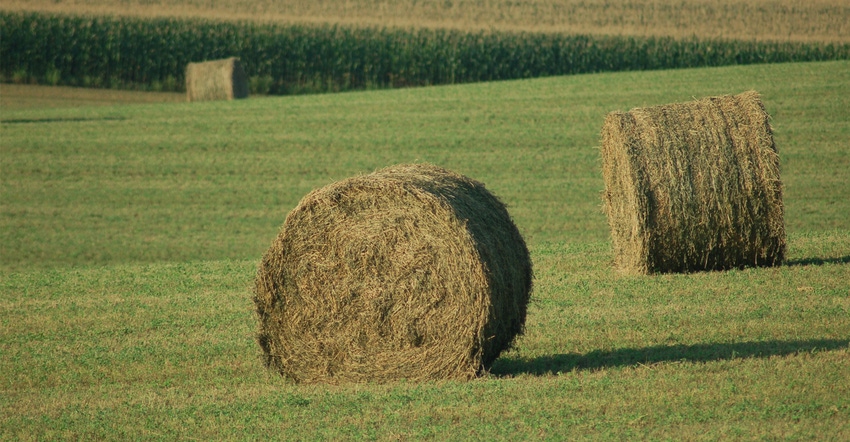November 2, 2017

As producers start looking at feed to supply their cattle through winter, they may want to consider testing it to save money. By investing in a $30 feed test, they may be able to reduce their feed costs by $600 for every 100 cows in their herd.
University of Nebraska Extension educator Troy Walz discusses controlling feed costs during a ranching-for-profit meeting. "It will probably cost around $30 for the test, your time collecting samples and mailing them in," he says. "However, if you feed 1 pound of alfalfa more than you need to, based on the ration for your cow and $80-a-ton alfalfa, overfeeding that 1 pound per cow is costing $6 a cow," he says. He bases this cost on 4 cents per pound of hay a day for 151 days.
Testing forages is important. "You can't use a feed cost calculator if you don't have some sort of forage test done," he says. "There is a lot of difference in forages, depending upon when the forage is harvested. Tests should also be done on grains and silages to get an idea of the crude protein and energy content."
Walz reminds producers how the stage of maturity can impact nutrition. "As a grass plant matures, early in the spring, it is all vegetative," he says. "It is all leaf blades. But later in the season, it puts on more stalk and grows a seed head. It has more fiber and lignin, and the crude protein and energy will go down as the plant matures," he says. "Maturity at harvest is the biggest impact on forage quality."
If producers are harvesting hay for themselves, Walz says they should consider what animals the hay will be fed to in order to determine when to harvest it. "The goal is to optimize forage quality with yield to meet the requirements of the animals you will be feeding," he says.
Walz says gestating cows will need at least 7.1% crude protein; replacement heifers, 8% to 10%; and weaned calves, 10% to 12%. "Think about that when you are putting up hay," he says. "If you wait too long, you may have to pay more for supplementation this fall and winter to meet their nutritional requirements," he explains.
Optimizing profitability by reducing feed costs is important, especially since feed is the highest cost in most cattle operations, he continues. If producers feed a supplement, they should consider nutrients like crude protein, energy and TDN that is needed to complete the ration. Palatability of the supplement, limiting consumption, cost, delivery method, storage and availability should also be considered.
The University of Nebraska offers a feed cost calculator on its website that will help producers determine the cost of supplements. But to use it, producers will need to figure the total pounds of either crude protein or energy, on a dry matter or as-fed basis.
As an example, Walz figures $80-a-ton alfalfa with 18% crude protein and 89% dry matter will yield 320.4 pounds of crude protein. Dividing $80 by 320.4 pounds figures out to 25 cents a pound of crude protein.
He compares this to dried distillers grain with solubles at $130 a ton with 29% crude protein and 90% dry matter, yielding 522 pounds of crude protein. Dividing $130 a ton by 522 pounds calculates out to 24.9 cents a pound of crude protein.
"In this example, the cost is the same, but the difference will be in the transportation costs, convenience of feed-ability and the feeding costs," he says. "With the dry distillers grains, you will have to feed it as a cube or as meal, and with alfalfa, you have to start the tractor each time," he explains.
Waste is also a factor. "If you feed hay on the ground, how much will they waste?" he asks producers. "If you feed distillers, can you feed it in a bunk? Those are questions you need to consider," he says.
By using the feed cost calculator, producers can determine the final cost of supplementing cattle, including costs like transportation, storage, cost to feed and waste. "It goes through all the calculations of costs you should consider when purchasing a supplement," he explains. "The program also allows you to enter different feeds you are considering and compare them to find the lowest price. It is a handy spreadsheet you can get a lot of information from quickly. By using this spreadsheet, it will give you a good idea of what your costs will be through the winter, and it will help you determine your cost of production. The point is to look at your operation and your feeding economics," he states.
Clark writes from Potter.
About the Author(s)
You May Also Like




